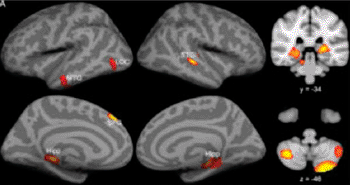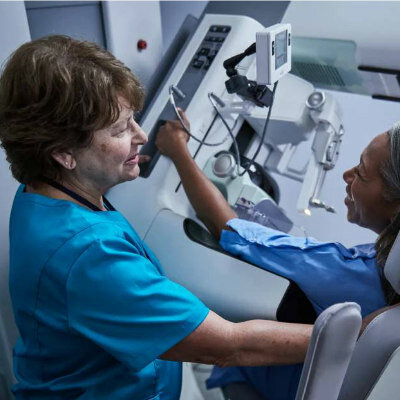Brain Hubs Work Together to Make Reading Possible
By MedImaging International staff writers
Posted on 20 Aug 2013
A combination of brain scans and reading tests has revealed that several regions in the brain are responsible for allowing humans to read. The new findings open up the possibility that individuals who have difficulty reading may only need additional training for specific parts of the brain, i.e., targeted therapies that could more directly address their individual weaknesses.Posted on 20 Aug 2013
“Reading is a complex task. No single part of the brain can do all the work,” said Qinghua He, postdoctoral research associate at the University of Southern California (USC; Los Angeles, USA) Brain and Creativity Institute and the first author of a study on this research that was published July 31, 2013, in the Journal of Neuroscience.

Image: Brain scans show a correlation between how well participants could make a connection between a new word and a sound, and the gray matter volume in the hippocampus and cerebellum (Photo courtesy of Qinghua He).
The study examined the link between reading ability and brain structure revealed by high-resolution magnetic resonance imaging (MRI) scans of over 200 participants. To control for external factors, all of the participants were about the same age and education level (college students), right-handed (left-handers use the opposite hemisphere of their brain for reading), and all had about the same language skills (Chinese-speaking, with English as a second language for more than nine years). Their response speed, IQ, and memory were also tested.
First, the study gathered data for seven different reading tests of a sample over 400 participants. These tests were aimed to explore three aspects of their reading ability: phonologic decoding ability (the ability to sound out printed words); form-sound association (how well participants could make connections between a new word and sound), and naming speed (how quickly participants were able to read aloud). Each of these features turned out to be related to the gray matter volume—the amount of neurons—in different areas of the brain.
The MRI analysis demonstrated that phonologic decoding ability was powerfully connected with gray matter volume in the left superior parietal lobe (surrounding the top/rear of the brain), form-sound association was strongly connected with the hippocampus and cerebellum, and naming speed lit up a range of locations around the brain.
“Our results strongly suggest that reading consists of unique capacities and is supported by distinct neural systems that are relatively independent of general cognitive abilities,” said Dr. Gui Xue, corresponding author of the study. Dr. Xue was formerly a research assistant professor of USC, and now is a professor and director of the Center for Brain and Learning Sciences at Beijing Normal University (China). “Although there is no doubt that reading has to build up existing neural systems due to the short history of written language in human evolution, years of reading experiences might have finely tuned the system to accommodate the specific requirement of a given written system.”
One of the significant aspects of this study is its unusually wide sample size. Typically, MRI studies test a comparatively small sample of individuals (roughly 20 to 30) because of the high cost of using the MRI unit. Testing a single individual can cost about USD 500, depending on the nature of the research.
The investigators received access to Beijing Normal University’s new MRI center, the BNU Imaging Center for Brain Research, just before it opened to the public. With support from several grants, they were able to conduct MRI tests on 233 individuals.
The group will next study how to integrate data from other factors, such as white matter, resting and task functional MRI and more powerful machine-learning technology to optimize the effectiveness of individuals’ reading abilities. “Research along this line will enable the early diagnosis of reading difficulties and the development of more targeted therapies,” said Dr. Xue.
Related Links:
University of Southern California
Beijing Normal University














